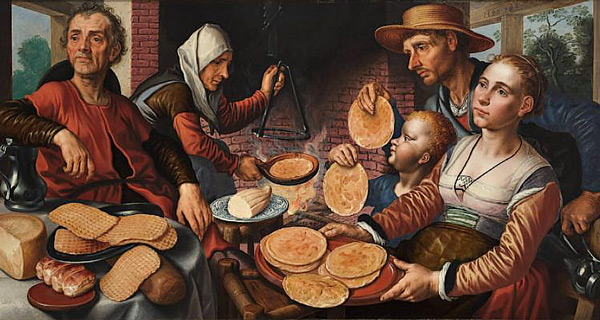This scene of the temptation of Christ comes from the Très Riches Heures du Duc de Berry, a 15th-century book of hours, or personal devotional book created especially for Duke Jean de Berry. The book offered meditations based on the time of day, as well as the feasts and seasons of the liturgical calendar. As the Latin text on the bottom tells us, this scene comes from the Gospel for the first Sunday of Lent.
The illuminated scene shows Christ resisting the temptations of the devil atop an ornately detailed Gothic castle. This castle was modeled after a real one, the Duke’s own castle at Mehun-sur-Yevre. Christ standing on top of this castle in the context of his temptation is an image that must have been deeply challenging for the Duke and meant to recall him to humility and conversion.
The scene is a conflation of the three temptations Jesus experienced in the desert. On top of the castle’s tower, he is experiencing the heights the devil asked him to jump from, and seeing all the riches of the world that might entice him. The devil completes the narrative by handing Jesus a stone to turn into bread. Alluding to all three temptations atop of the castle shows the Duke that he is in danger of succumbing to all of these. But rather than casting the Duke into despair and shame, the image offers hope and encouragement: we spot on the bottom right a mighty lion that has treed an ape-like adversary, a metaphor perhaps of the Duke conquering his personal temptations.
The three swans swimming in the moat further connect this scene to the Duke. An often-used symbol for de Berry, the swan was an homage to a woman for whom de Berry’s love was unrequited. To spot the swans in this image connects sin and temptation to one’s own hurts and woundedness. Our own suffering and pain can lead us to grasp tightly at our own reality, sometimes to the point of tearing our wounds even deeper. Conversion of heart means letting go and trusting in God’s healing love to mend the brokenness of our lives.







